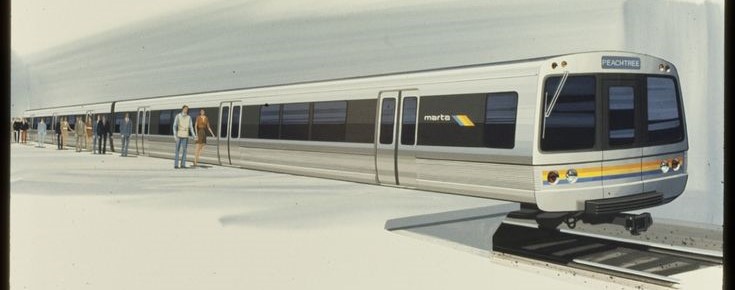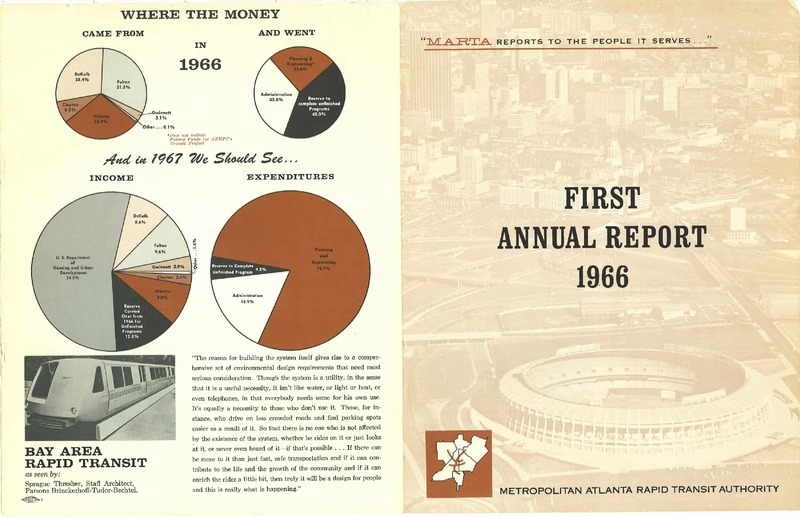MARTA First Annual Report
This is the first annual report for MARTA, which details funds allocated to the establishment of the transportation system in 1966. The federal government gave MARTA $2 million dollars to begin operations on the project, and local county governments allocated another 250,000 each year. Local money came from five local governmental entities: 28.4% from Dekalb, 31.5% from Fulton, 8% from Clayton, 3.1% from Gwinnett, and 0.1% from other. Out of this local money allocated, 33% went towards administration, 25% towards planning and execution, and 42% were reserved for complete and unfinished programs. The report also forecasts spending expectations for 1967, in which it predicted that nearly 55% of all funds would come from the United States Department of Housing and Urban Development, and the remainder 45% coming from local governments and carried over from the prior fiscal year.The source makes it clear that MARTA will have significant impacts on the Atlanta area, and that even if people do not ride directly, they will see its positive effects due to the decreased congestion on the roads. The report also features a message from the chairman of the board at the time, Richard H. Rich. Rich expresses joy that MARTA progress in the first year surpassed expectations. He said that the project “inspires us to increase our efforts in 1967 for even greater strides toward our ultimate goal of providing citizens with the most modern, efficient, and economical rapid transit system possible. In studying the financial report, I wondered about how MARTA will budget for future expansions, given the nature that the city is constantly growing. To help with this inquiry, I found an article by the Atlanta-Journal Constitution which talked about how MARTA plans to expand closer to the Atlanta beltline and will spend almost half a billion dollars in doing so. This will come at the expense of cutting funding near the Emory area. This plan to create MARTA expansion is called “More MARTA”, and according to Mayor Kesha Lance Bottoms “enhances our public transportation system in an exceptional way – providing better, more efficient service that will have a positive impact on both economic development and quality of life throughout our city”.
Works Cited:
M4arta0166, Metropolitan Atlanta Rapid Transit Authority (MARTA) Digital Collection, Georgia State University Library. https://digitalcollections.library.gsu.edu/digital/collection/marta/id/7106
Wickert, David. “MARTA Plans to Boost Atlanta Beltline, Cuts Funding for Emory Line”. The Atlanta Journal Constitution, 17 Sep, 2018 https://www.ajc.com/news/local-govt--politics/local-update-marta-plan-boosts-atlanta-beltline-cuts-funding-for-emory-line/ILPofMcJKbAw0e3KNBBIUI/

